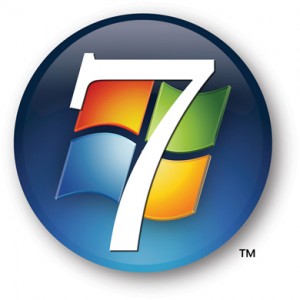Thanksgiving Special - Buy one component* and get additional components at 25% off! Offer ends Dec. 4. We are closed 11/27 and 11/28. Reopening Monday 12/1.
Thanksgiving Special - Buy one component* and get additional components at 25% off! Offer ends Dec. 4. We are closed 11/27 and 11/28. Reopening Monday 12/1.
Windows 7 Audio Playback Setup Guide
by Benchmark Media Systems October 03, 2014

Windows 7 Audio
Windows 7, like Windows Vista, requires the user to set the sample-rate for streaming audio. In contrast, Windows 2000 and XP simply streamed at the sample-rate inherent to the audio file and/or media player being used.
In our testing, we found evidence that Windows 7 converted the audio to the sample-rate that is set in the 'Properties' menu for the playback device, unless the rate is set to the sample-rate of the audio being played. However, the sample-rate conversion within Windows 7 performs extremely well, causing no detectable amounts of distortion (below -140 dBFS).
Unfortunately, certain computers seem to have trouble maintaining a steady USB stream when running Windows 7 (even computers that worked perfectly with XP and/or Vista). We have found that turning off the 'energy saving' options will reduce the amount of interruptions in the USB stream.
This article will guide you in properly configuring your operating system and media player.
Guide to Configuring Windows Vista
Follow Sweetwater's guide to Optimizing Windows 7
http://www.sweetwater.com/sweetcare/downloads/Windows_7_Optimization_Guide.pdf
Turn off all energy saver options
This is only necessary if you are experiencing clicks and/or dropouts.
Go to:
Control Panel -> System and Security -> Power Options -> choose "High performance”
Turn-off operating system sounds
System sounds could compromise the quality of your audio (as well as being incredibly annoying!). They will interrupt bit-transparency and could cause clipping.
To turn system sounds off, open "Sounds", which is located in the Control Panel. Continue as follows:
Control Panel -> Hardware and Sound -> Sound -> Sounds -> Sound scheme -> choose "No Sounds”
Keep all digital volume controls at 'unity gain' (100% or 0.0 dB)
This applies to digital volume controls in media players, Windows Volume Control, or any others
If any digital volume control is used, we recommend the Windows Volume Control, as it causes very little distortion
We recommend always using an analog volume control (post D-to-A)
Read more about the effects of digital volume control to see why this is important
Set "Default Format" to the highest sample rate and word length (bit depth) that your playback device is capable of (96 kHz for Benchmark USB interfaces)
Win 7 will convert the audio if the sample rate is not matched. However, the performance is of such quality that we still recommend this setting because it will maintain the highest bandwidth possible. To set this, right-click on the 'speaker' icon in the system tray (near the clock), choose "Playback Devices" and continue as follows:
"Playback" -> Select the device for which you would like to configure -> "Properties" -> "Advanced" -> "Default Format" -> change the sample rate to the appropriate setting.
Keep all DSP and plug-ins turned off
Certain players and devices have various audio effects such as "EQ", "Surround Sound
Simulations", "Bass Boost" or "Sound Enhancer". We highly recommend to disabling all of these audio DSP and plug-ins.
Guide to configuring media players for Windows
Follow the guide for setting up the Media Players for Windows that you use with Windows
- iTunes-QuickTime for Windows - Setup Guide
- Windows Media Player for Windows - Setup Guide
- WinAmp for Windows - Setup Guide
- Foobar2000 for Windows - Setup Guide
- RealPlayer for Windows - Setup Guide
Also in Wiki
Bit Transparency
by Benchmark Media Systems October 03, 2014
Introduction
A digital audio device achieves bit-transparency if it passes digital audio data without affecting the data in any way. This device may be hardware, software, or a combination of both.
Testing for Bit Transparency
To determine if a device is bit-transparent, it can be tested by sending a pseudo-random bit sequence through it and monitoring the digital output. We typically generate the pseudo-random sequence using an Audio Precision digital signal generator. The Audio Precision includes a digital analyzer that is programmed to detect the pseudo-random sequence produced by the generator. The analyzer detects any differences between the generated sequence and the received sequence. The number of differences is tallied by a counter. A digital channel that is bit transparent will show no differences between the transmitted and received pseudo-random sequences.
Dither
by Benchmark Media Systems October 03, 2014
Definition
Dither is a type of intentional variation (noise) which is added to a digital audio signal to avoid distortion caused by quantization errors.
Dithering in audio
Dither is often used when an analog signal is being quantized into a finite number of digital levels. It is also often used when a digital signal is being quantized into a fewer number of bits per sample corresponding to a fewer number of digital levels.
Dither randomizes the errors ...

